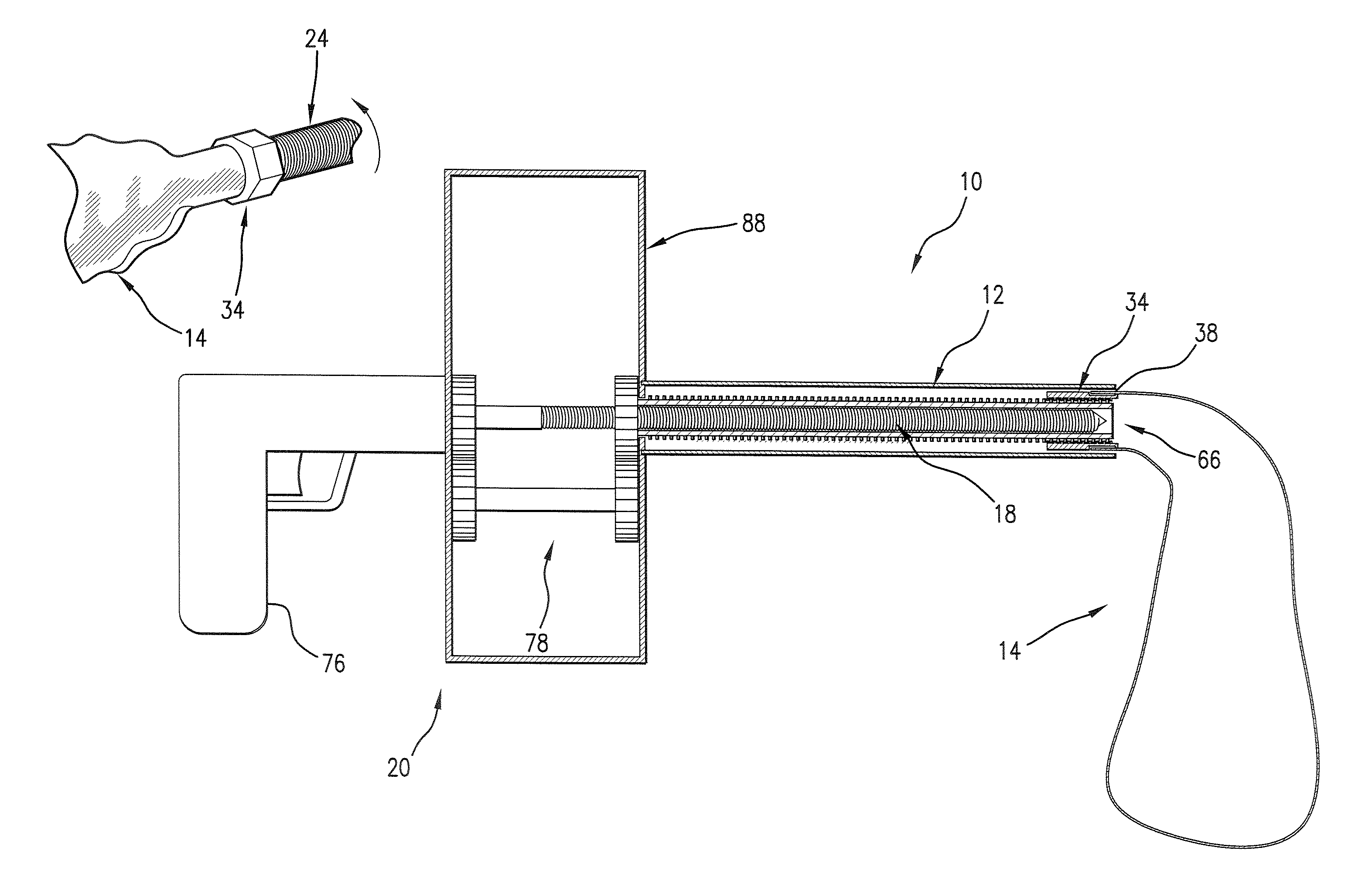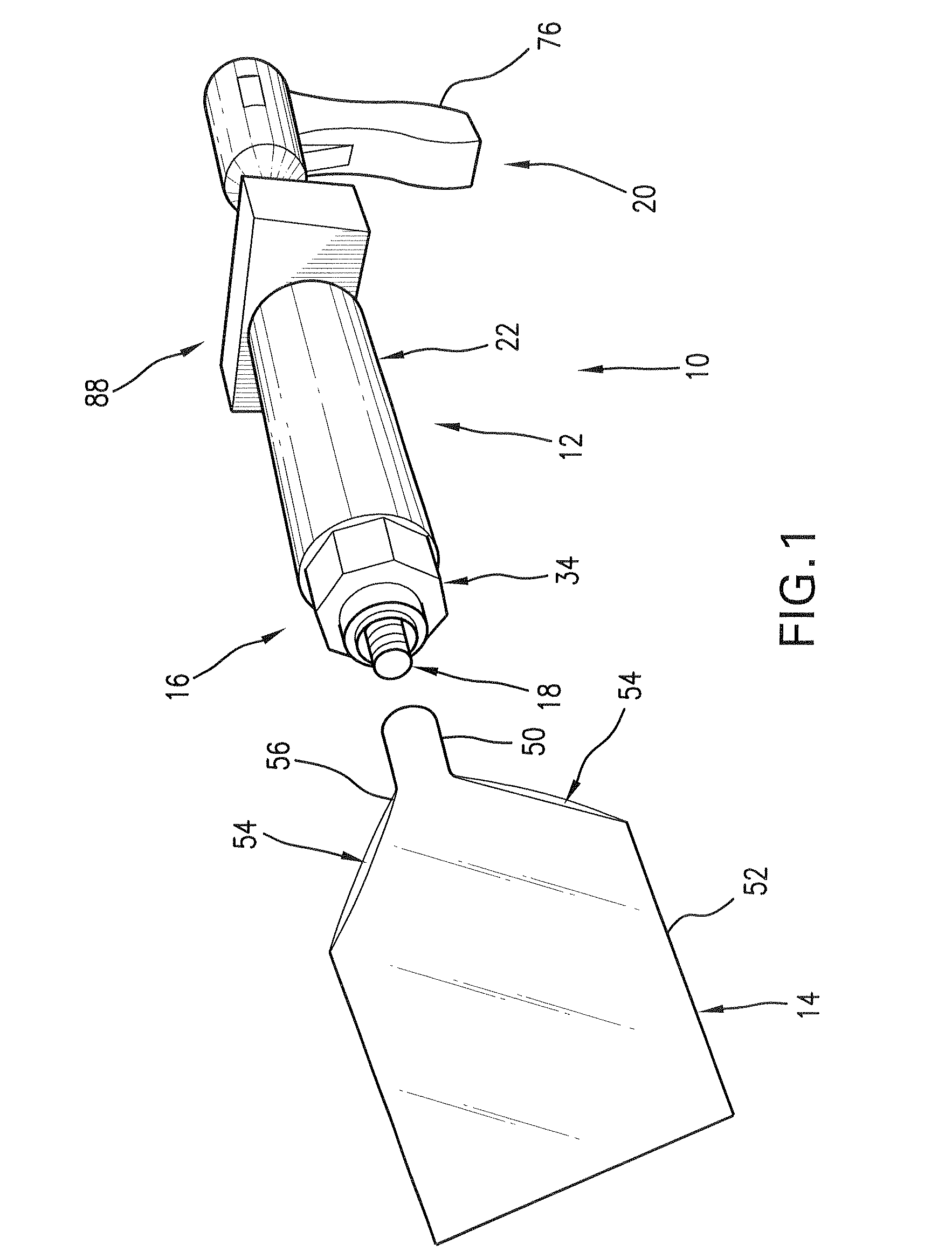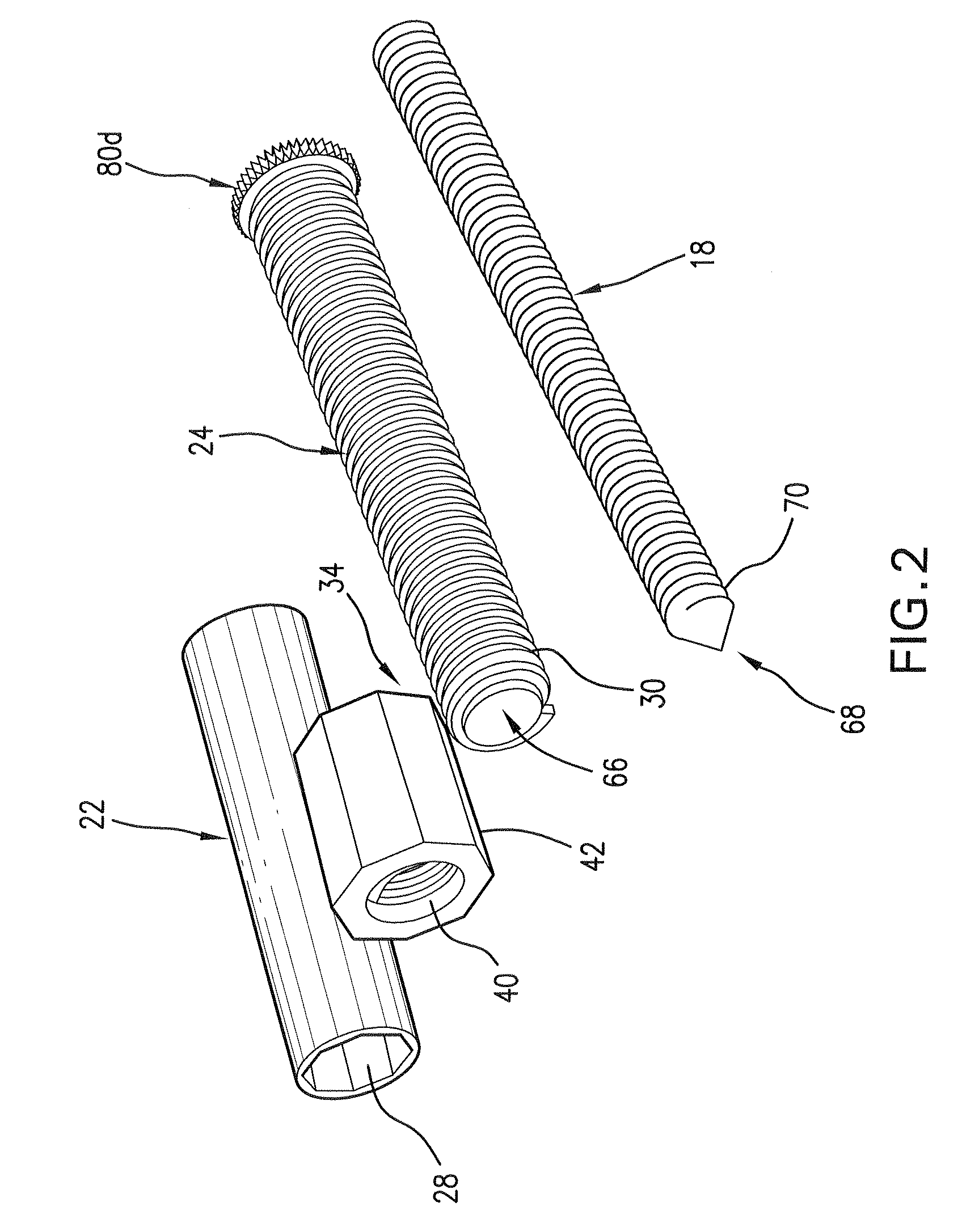Medical device and method for human tissue and foreign body extraction
a technology of human tissue and foreign body, applied in the field of medical devices and methods, can solve the problems of injury, death, and inability to fit through the small openings in the skin, and take too long to de-bulk and remove the tissue,
- Summary
- Abstract
- Description
- Claims
- Application Information
AI Technical Summary
Benefits of technology
Problems solved by technology
Method used
Image
Examples
Embodiment Construction
[0054]Referring now to the drawing figures, FIGS. 1-5B show a tissue capture and extraction device 10 according to an example embodiment of the present invention. The device 10 includes a coaxial tube assembly 12, a capture bag 14, a bag-translating assembly 16, a de-bulking tool 18, and a drive assembly 20. The drive assembly 20 operates the bag-translation assembly 16 to move the bag 14 through the coaxial tube assembly 12 to deliver the bag into a cavity in a patient's body. After a mass of tissue in the cavity is freed from its surroundings and placed in the bag 14, the drive assembly 20 operates the bag-translation assembly 16 to begin retracting the bag back into the coaxial tube assembly 12. As the bag 14 is being retracted, the mass in the bag is brought into engagement with the de-bulking tool 18. Then the drive assembly 20 operates the de-bulking tool 18 to morcellate the mass in the bag 14 and extract the morcellated mass bits through the coaxial tube assembly 12. The dev...
PUM
 Login to View More
Login to View More Abstract
Description
Claims
Application Information
 Login to View More
Login to View More - R&D
- Intellectual Property
- Life Sciences
- Materials
- Tech Scout
- Unparalleled Data Quality
- Higher Quality Content
- 60% Fewer Hallucinations
Browse by: Latest US Patents, China's latest patents, Technical Efficacy Thesaurus, Application Domain, Technology Topic, Popular Technical Reports.
© 2025 PatSnap. All rights reserved.Legal|Privacy policy|Modern Slavery Act Transparency Statement|Sitemap|About US| Contact US: help@patsnap.com



